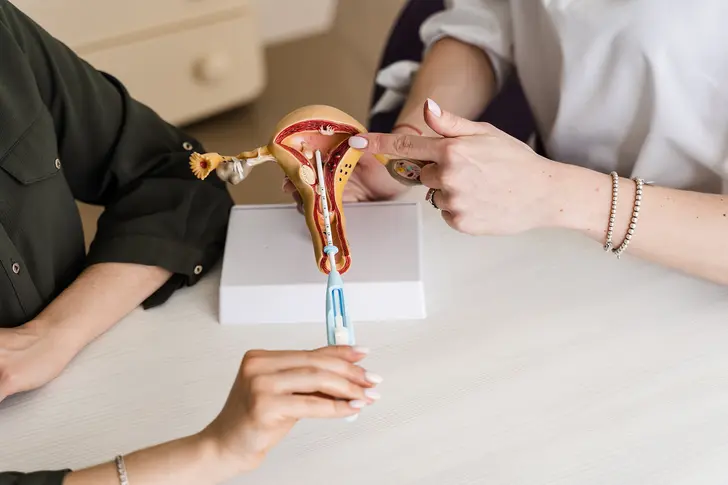- Overview
- Types
- Hormonal Methods
- Barrier Methods
- Behavioral Methods
- Medical Methods
- Male Birth Control
- Emergency Contraception
- Side Effects & Complications
- View Full Guide
Signs Your IUD Is Out of Place



When an IUD May Shift
Your doctor will schedule a checkup about a month after you get your IUD to make sure it's still in the right place. When an IUD moves, it usually happens within the first few months after you get it.

Signs Your IUD Is Out of Place
Symptoms such as heavy or abnormal bleeding, persistent pain, or not feeling the IUD strings can mean that your IUD has shifted. It's possible for an IUD to move out of place without any signs.

Get to Know Your IUD Strings
Feeling for the IUD strings regularly can help you ensure the device is still in place. If the strings feel shorter, longer, or are missing, it may mean that the IUD has moved and needs to be checked by a health care provider.

When to Call a Doctor
If you suspect your IUD has moved, call your doctor and use a backup form of birth control like condoms or spermicide. It's rare, but you can have complications if your IUD moves, such as reduced blood flow to your organs.

Removal and Replacement
If your IUD is out of place, it may need to be removed or replaced. Your doctor will talk to you about other birth control options, such as pills, patches, rings, and implants.
Photo Credits:
1) Rabizo Anatolii/Shutterstock
2) Studio Romantic/Shutterstock
3) Halfpoint/Shutterstock
4) Shutterstock
5) Gorodenkoff/Shutterstock
6) Image Point Fr/Shutterstock
SOURCES:
Mayo Clinic Health System: “Troubleshooting Your IUD.”
Peace Nwegbo-Banks, MD, FACOG, Serenity Women’s Health & Med Spa.
Center for Young Women’s Health: “Intra-Uterine Devices (IUDs).”
University of Washington Department of Obstetrics and Gynecology: “IUD Aftercare Instructions.”
Bedsider: “IUD Expulsion: Is it as scary as it sounds?”
NHS: “Intrauterine Device (IUD).”
AAFP: “Intrauterine Device (IUD).”
Nemours Teen Health: "The IUD."